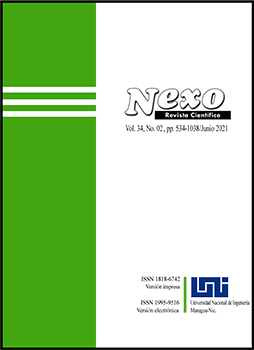City with Smart Waste Management: Introducing Waste Bin Technologies
DOI:
https://doi.org/10.5377/nexo.v34i02.11628Keywords:
Internet of Things (IoT), Waste collection, Smart trash, Radio frequency identification, Smart waste managementAbstract
Population growth and urbanization have led to an increase in the rate of waste production, the lack of timely and proper management of which will have adverse effects on human life and the environment. Since most of the waste management costs are spent on waste collection and transportation, it is necessary to find solutions to control the huge costs of this sector. On the other hand, today, intelligent technologies are used globally as solutions to meet challenges in various fields such as agriculture to improve agro-industrial production, transportation, and waste management, which creates a concept called smart cities. One of the categories that has changed the concept of cities and made them have easier and smarter answers to various events and needs is the "Internet of Things", in which many cases and infrastructures with new hardware technologies and Software are integrated. Waste collection is no exception to this rule and efforts have been made to make it smarter. In this research, some of the latest innovations presented globally in order to make trash smarter have been examined.
Downloads
1594
Downloads
Published
How to Cite
Issue
Section
License
The authors who publish in Nexo Scientific Journal agree to the following terms:
- Authors retain the copyright and grant the journal the right of the first publication under the license Creative Commons Attribution License, which allows others to share the work with a recognition of the authorship of the work and the initial publication in Nexo Scientific Journal.
- Authors may separately establish additional agreements for the non-exclusive distribution of the version of the work published in the journal (for example, in an institutional repository or a book), with the recognition of the initial publication in Nexo Scientific Journal.
- Authors are allowed and encouraged to disseminate their works electronically (for example, in institutional repositories or in their own website) before and during the submission process, as it can lead to productive exchanges, as well as earlier and greater citation of published works.










